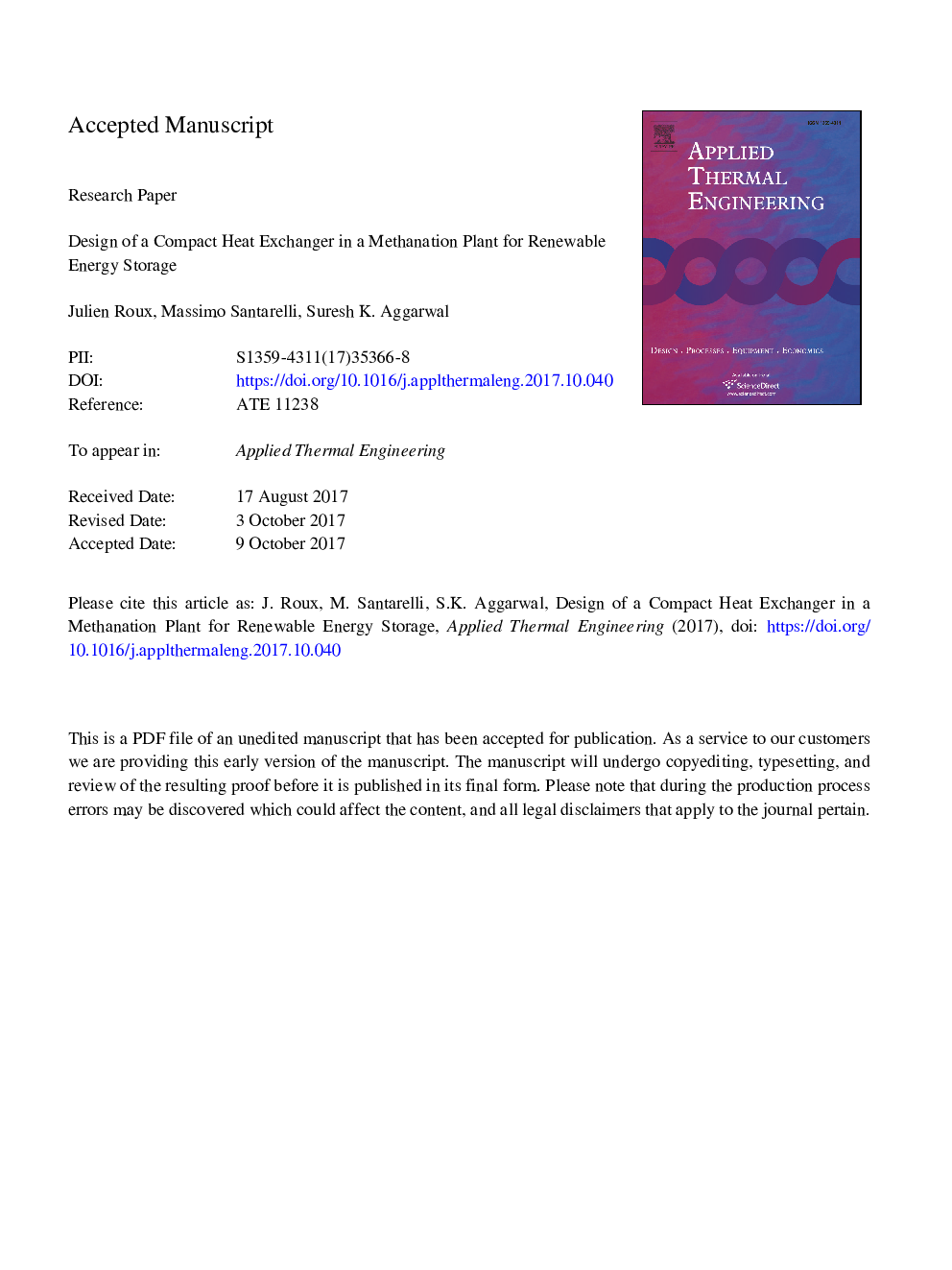| Article ID | Journal | Published Year | Pages | File Type |
|---|---|---|---|---|
| 7046521 | Applied Thermal Engineering | 2018 | 21 Pages |
Abstract
Power-to-Gas (P2G) is a viable technology for renewable energy storage. In one of its preferred configurations, a hot gaseous mixture of H2O and CO2 is fed to a high temperature electrolysis module (SOEC) and gets converted to CO and H2, which are subsequently converted into methane in a methanation module. Here the SOEC is powered by using the excess energy of the renewable source. For such a system to work efficiently, it is necessary that the gaseous mixture enter the SOEC at a sufficiently high temperature. The present study aims at designing a compact heat exchanger (HE) to heat the inlet mixture to the required temperature of 850 °C, using a regenerative solution. The design process consists of two complementary steps. The first step involves an analytical sizing procedure based on the known ε-NTU method along with semi-empirical correlations, which rapidly provides a cost-effective, preliminary heat exchanger design (construction type, flow configuration and fin geometry). In the second step, the preliminary design is refined and optimized using 3-D CFD simulations, resulting in an ultra-compact HE with elliptical fin shape. The optimization procedure was aimed at maximizing the device thermo-hydraulic performance and compactness index, benchmarked with respect to other notable designs so as to highlight the current design soundness. The optimum HE design has an effectiveness of 96%, pressure losses as low as 5.5 and 4.3 mbar on the cold and hot sides, respectively, and a heat transfer area density of 3600 m2/m3.
Related Topics
Physical Sciences and Engineering
Chemical Engineering
Fluid Flow and Transfer Processes
Authors
Julien Roux, Massimo Santarelli, Suresh K. Aggarwal,
